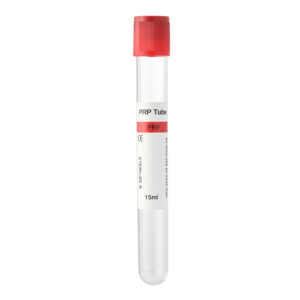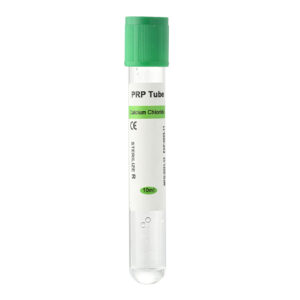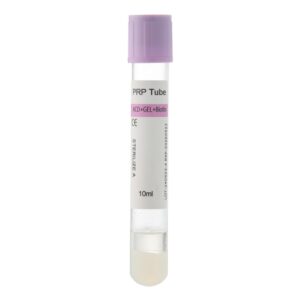Butterfly needles, often called winged needles, play an essential role in blood sampling and short-term infusions. Their unique design makes them easy to handle and helps reduce pain during insertion. This guide explains what a butterfly needle is, how to prepare for its use, a step-by-step procedure, and the necessary precautions to follow.
Overview of the Butterfly Needle
Definition and Design
A butterfly needle features flexible wings on both sides, which allow the operator to maintain a steady grip during insertion. Key parts include:
- Needle: Made of high-quality stainless steel, sharp and resistant to rust.
- Wings: Usually constructed with a soft plastic material that provides a secure grip.
- Tubing: A thin, transparent tube that lets the operator see when blood flows back into the needle.
Uses and Benefits
Butterfly needles serve two main purposes:
- Blood Sampling: Ideal for patients with minor or fragile veins, such as young children or the elderly.
- Short-Term Infusions: Useful in emergency treatments or monitoring as they quickly establish vein access.
The benefits include:
- Ease of Use: Simplifies the procedure and reduces patient discomfort.
- High Accuracy: Allows for better control over insertion angle and depth, reducing the need for multiple attempts.
- Wide Application: Commonly used across various departments like emergency care, internal medicine, and pediatrics.
Preparation Before Use
Proper preparation helps ensure that the procedure is safe and successful. Follow these steps carefully:
Equipment Inspection
- Check Packaging: Confirm that the packaging is intact, the needle is not expired, and all labels match the clinical requirements.
- Examine the Device: Make sure the needle, wings, and tubing remain undamaged. Replace the needle if any issues arise.
Maintain a Clean Environment
- Clean Workspace: Choose a well-lit, ventilated, and clean area to perform the procedure.
- Disinfect Hands: Wash hands thoroughly and use an alcohol-based disinfectant to prevent contamination.
- Gather Supplies: Prepare alcohol swabs, sterile gauze, a tourniquet, a syringe (if needed), and a container for disposing of used needles.
Communicate with the Patient
- Explain the Process: Describe the steps and any potential discomfort to the patient or family member to help ease any anxiety.
- Review Medical History: Check for any previous issues with vein access, allergies, or skin infections that might affect the procedure.
Standard Operating Procedure
For a safe and effective use of the butterfly needle, follow this procedure:
Disinfect the Skin
- Method: Use an alcohol swab to clean the area where the needle will be inserted (commonly the forearm or back of the hand). Wipe from the inside out and let the area dry naturally for about 30 seconds.
Locate and Stabilize the Vein
- Vein Selection: Choose a vein that is visible and feels robust. Ask the patient to squeeze their hand if needed to help the vein fill.
- Apply the Tourniquet: Place a tourniquet on the upper arm to make the vein more prominent. Avoid applying it too tightly or for too long.
Open the Butterfly Needle
- Opening Technique: Carefully open the sterile package on a clean surface without touching the needle or tubing directly.
- Final Check: Verify that all parts remain intact and undamaged before proceeding.
Insert the Needle
- Insertion Angle and Pressure: Hold the wings firmly and insert the needle at an angle between 10° and 30°. Watch for the moment when blood enters the transparent tubing, indicating that the needle has entered the vein.
- Adjust if Needed: If no blood appears, adjust the angle or pressure, then try again without causing unnecessary discomfort.
Secure and Connect the Tube
- Stabilize the Needle: Once the needle is in place, secure it using the wings and adhesive tape to prevent movement during the collection or infusion.
- Connect the Equipment: Attach the needle to the tubing, and start drawing blood or infuse the necessary medication. Ensure that the tubing remains straight and free of kinks.
Post-Procedure Care
- Remove the Needle and Stop Bleeding: After the procedure, remove the needle quickly and press the area with sterile gauze or a cotton ball until the bleeding stops. If bleeding continues, consider a cold compress.
- Dispose of Waste Properly: Immediately dispose of the used needle, tubing, and any other disposable materials in a designated medical waste container.
- Document the Process: Record details such as the product batch number, the procedure steps, and patient reactions to support quality tracking.
Important Considerations and Risk Prevention
Follow Sterile Procedures
- Maintain Clean Techniques: Every step must follow proper sterile practices to prevent infections. Regular training on sterile techniques is critical.
Enhance Operator Skills
- Skill Development: Operators should undergo regular training to become proficient with butterfly needle use.
- Adjust for Individual Needs: Adapt the technique for patients with fragile veins, such as the elderly or children, to minimize risks.
Emergency and Risk Management
- Prepare for Accidents: If any issues occur during the procedure, such as sudden pain or swelling, stop immediately and provide first aid.
- Monitor Patient Condition: Continuously observe the patient for any signs of infection or complications after the procedure.
Frequently Asked Questions and Professional Advice
Suitability in Different Clinical Settings
Butterfly needles work well not only for routine blood sampling but also in special cases:
- Older Patients: They reduce discomfort for patients with delicate veins.
- Young Children: They increase the chances of a successful sample when veins are hard to see.
Handling Unsuccessful Attempts or Complications
- Failed Insertion: If the first attempt fails, adjust the needle’s angle or pressure and try a different vein if necessary.
- Managing Complications: For issues such as swelling, redness, or local infections, apply a cold compress, increase pressure on the area, and consult a doctor promptly.
Regular Training and Equipment Checks
- Ongoing Training: Regular workshops on sterile procedures and emergency handling help maintain high standards.
- Equipment Maintenance: Regular checks for storage conditions and device integrity ensure that the needle performs as expected.
Summary and Clinical Tips
Butterfly needles remain a reliable choice for blood sampling and short-term infusions when used correctly. Following strict sterile practices, preparing the equipment meticulously, and using clear, step-by-step techniques promote safety and success. Regular training, prompt handling of complications, and continuous monitoring of both equipment and patient status uphold high clinical standards.





